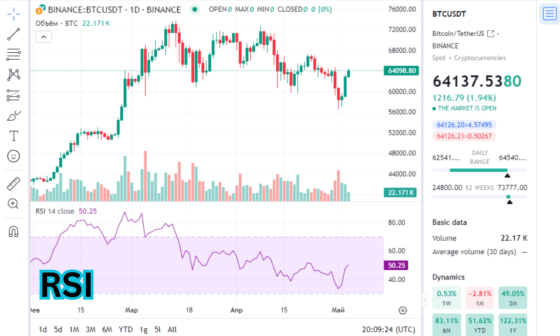Directional Movement Index, or DMI, is a technical indicator that measures the strength of buying and selling pressure in a financial market.
Developed by J. Welles Wilder, Jr., the measure is used to indicate whether a security is trending or ranging.
In this blog post, we’ll take a closer look at what DMI is and how it can be used by traders. We’ll also cover some tips for using DMI effectively in your trading strategy.
So, if you’re interested in learning more about one of the most popular technical indicators out there, read on!
What is Directional Movement Index
The Directional Movement Index (DMI) is a technical indicator used in stock trading to predict price movements. It is based on the premise that the market has a natural tendency to move in cycles, and that these cycles can be used to predict future price movements. The DMI calculates the difference between two moving averages, and then uses this information to generate buy or sell signals.
For example, if the DMI indicates that the market is moving up, it may be a good time to buy shares. Conversely, if the DMI indicates that the market is moving down, it may be a good time to sell shares.
The Directional Movement Index can be used in conjunction with other technical indicators to make more informed investment decisions.
The Directional Movement Index (DMI) is a technical indicator that is used to determine the strength and direction of a trend.
The DMI consists of two lines: the +DMI line and the -DMI line. The +DMI line measures the amount of buying pressure in the market, while the -DMI line measures the amount of selling pressure. A reading above 25 on the +DMI line indicates that there is strong buying pressure, while a reading below 25 on the -DMI line indicates that there is strong selling pressure.
A reading of 50 on either line indicates that there is no clear trend. The DMI can be used to identify potential reversals or breakout points in the market.
Directional Movement Index Formula
The Directional Movement Index is a technical analysis tool that is used to help identify whether a security is trending or not. The formula consists of two moving averages, one for up days and one for down days, as well as a momentum indicator. The formula is:
DMI = 100 x ((+DM)/ATR)
-DM = smoothed average of the true range for the past n periods
+DM = smoothed average of the true range for the past n periods
ATR = average true range over the past n periods
n = number of periods used in the calculation ( typically 14)
The Directional Movement Index can be used on any time frame, but it is most commonly used on daily charts.
When the Directional Movement Index is above 25, it indicates that the stock is in an uptrend. Conversely, when the Directional Movement Index is below -25, it indicates that the stock is in a downtrend.
Using Directional Movement Index in Your Trading Strategies
The Directional Movement Index (DMI) is a trading tool that can be used to help you make better trading decisions. The DMI is based on the concept of price action, which is the movement of prices over time. The index consists of two lines: the +DMI line and the -DMI line. The +DMI line measures the strength of the uptrend, while the -DMI line measures the strength of the downtrend. A buy signal is generated when the +DMI line crosses above the -DMI line, and a sell signal is generated when the -DMI line crosses above the +DMI line. The DMI can also be used to generate trading signals.
For example, if the +DMI line rises above 30 and then falls below 20, this would be a sell signal. Conversely, if the -DMI line falls below 30 and then rises above 20, this would be a buy signal. The Directional Movement Index can be a useful tool for any trader, but it is important to remember that no trading tool is 100% accurate. You should always use other technical indicators in conjunction with the DMI to confirm trading signals.
Limitations of Directional Movement Index
The Directional Movement Index (DMI) is a popular technical indicator that is used to gauge the strength of a trend. However, the DMI has several limitations that investors should be aware of.
First, the DMI only measures price movement in one direction (up or down). This means that it cannot identify sideways trends or confirm whether a trend is truly reversal. Second, the DMI is based on historical data and does not take into account future events that could affect price movement. Third, the DMI is a lagging indicator, meaning that it often gives signals after a move has already begun.
As a result, investors should use the DMI with caution and always combine it with other technical indicators to get a more complete picture of market conditions.
Conclusion
If you are looking for a successful trading strategy, you should consider the Directional Movement Index.
The DMI is a powerful tool that can help you make money in the stock market. You can subscribe to our DMI-based trading strategies for free and start making money today.








